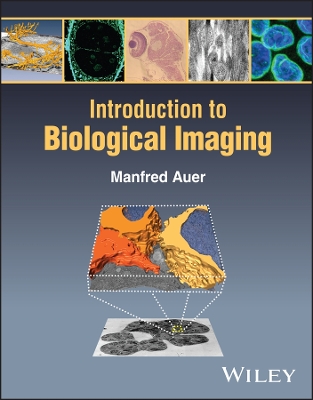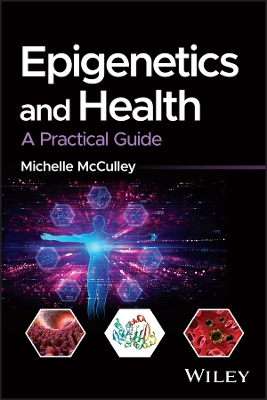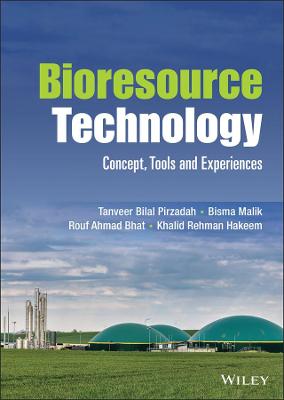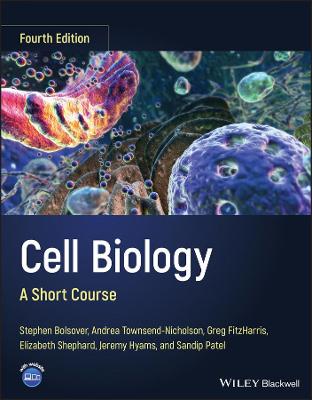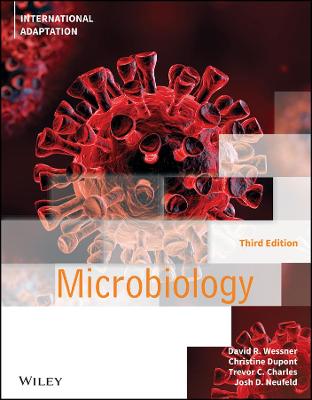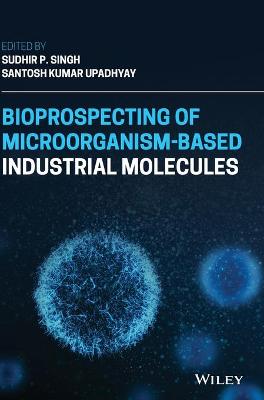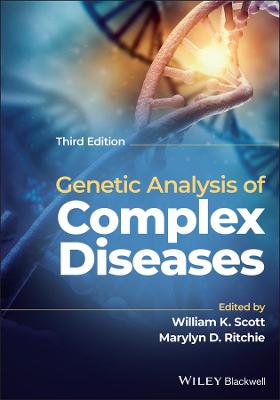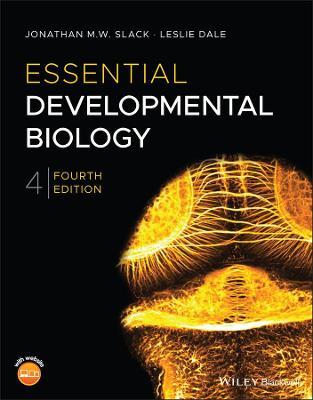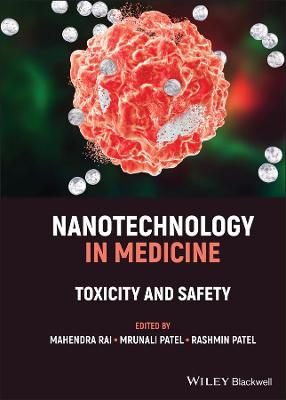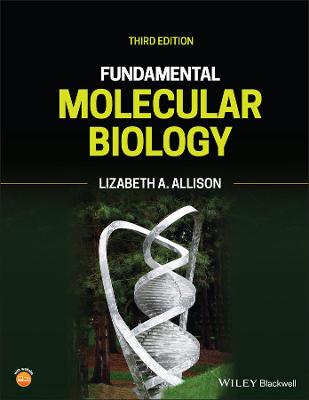Complex Biological Systems
 -15%
portes grátis
-15%
portes grátis
Complex Biological Systems
Adaptation and Tolerance to Extreme Environments
Biel, Karl Y.; Soukhovolsky, Vladislav G.; Fomina, Irina R.
John Wiley & Sons Inc
10/2018
606
Dura
Inglês
9781119510406
15 a 20 dias
1030
Abstract xix
Contributing Authors xxi
Modeling and Approaches 1
1 Critical Impacts on Complex Biological and Ecological Systems: Basic Principles of Modeling 3
Rem G. Khlebopros, Vladislav G. Soukhovolsky
1.1 Complex Ecological Systems: The Principle of Decomposition, Taking into Account the Characteristic Times of Components 5
1.2 Analysis of Critical Impacts on Complex Systems and Extreme Principles of Modeling 12
1.2.1 Meta-Models of Phase Transitions for Describing Critical Events in Complex Systems 13
1.2.2 A Model of Outbreak as Second-Order Phase Transition 14
1.2.3 The Effect of Modifying Factors on the Development of an Outbreak 21
1.2.4 The Impact of Chemical Compounds on Biological Objects 23
References 26
2 Criticality Concept and Some Principles for Sustainability in Closed Biological Systems and Biospheres 29
Nicholas P. Yensen, Karl Y. Biel
2.1 Introduction 31
2.2 History of Manmade Closed Ecosystems 32
2.3 Classification of Closed Biological Systems 33
2.3.1 Terminology 33
2.3.2 Micro Systems 35
2.3.3 Macro Systems 37
2.3.4 The Term Biosphere 39
2.3.5 Noosphere 40
2.4 The Concept of Criticality 40
2.4.1 The Volume-Criticality Principle 42
2.5 Microbiospheres: Descriptions and Discussion 44
2.5.1 The Ecosphere, a Synthetic Microbiosphere 44
2.6 Bioboxes 45
2.7 Experimental vs. Mathematical Models 45
2.7.1 Retrograde Phylogenetic Extinction 46
2.8 Humanospheres: Examples and Discussion 46
2.8.1 Biotubes 47
2.8.2 Shepelev, BIOS 1, 2, and 3 49
2.8.3 Biosphere 2 Laboratory 51
2.8.4 Closed System Missions 52
2.8.5 Open System Missions 53
2.8.6 The End of Biosphere 2 Laboratory or a New Era for Biosphere 2 Laboratory? 54
2.9 The Earth (Biosphere 1) Description and Discussion 55
2.9.1 Earth, a Sample Size of One 55
2.9.2 Biosphere 1 Properties 55
2.10 Oxygen Flux in Closed Systems 59
2.11 The Future of Closed System Work: Concepts and Strategies 61
2.11.1 Education, Research and Consortium Concepts 61
2.11.2 Ecosystems for Space 62
2.11.3 Closed System Challenges 63
2.12 General Conclusions 63
Abbreviations 64
Literature Cited and Used 64
Appendix I. A Description of Biosphere 2 Laboratory 70
3 Accelerated Method for Measuring and Predicting Plants' Stress Tolerance 73
Karl Y. Biel, John N. Nishio
3.1 Introduction 75
3.2 Background 75
3.2.1 Interaction between Anabolism and Catabolism 76
3.2.2 Cooperation between Photosynthesis and Respiration under Stress 78
3.3 How is Stress Tolerance Measured? 79
3.3.1 Testing Possible Artifacts of the Stress Test 81
3.3.2 Effect of Temperature and Chemical Additions on the Oxygen Evolution Stress Assay 84
3.4 Practical Applications 88
3.4.1 Whole Leaf Physiological Responses 90
3.4.2 Effect of Dark and Sodium Nitrate on the Photosynthetic Stress Resistance Index and Photosynthesis in Leaf Slices under Anoxic Conditions 97
3.4.3 Post-Illumination Respiration 98
3.5 Discussion 98
3.6 Perspectives for Application of Method 107
Acknowledgments 109
Abbreviations 110
References 110
Appendix I. Additional Materials and Methods 117
Appendix II. Preliminary Analysis of the Utility of a Novel Stress Resistance Assay on Three Garst Lines of Zea mays, a C4 Plant 118
Results 119
General Conclusion 122
Suggestions 122
Hypotheses 123
4 The Hypotheses of Halosynthesis, Photoprotection, Soil Remediation via Salt-Conduction, and Potential Medical Benefits 125
Karl Y. Biel, Nicholas P. Yensen
4.1 Introduction 127
4.2 The Haloconductor Theory 128
4.2.1 The Remediation of Saline Soils 128
4.2.2 New Approach for Soil Remediation via Salt Conducting Plants 130
4.2.3 Advantages of Conductor Plants for Soil Remediation 133
4.2.4 Productivity Considerations 134
4.2.5 Intriguing Productivity Curves in a Clonal Conductor Plant 136
4.3 The Halosynthesis Hypothesis 138
4.3.1 Concept Description and Terminology 139
4.3.2 Hydraulic Considerations and Salt Gradient from Soil to Shoot Surface 140
4.3.3 Salt Glands and Evapotranspirational Halosynthesis 143
4.3.4 The Photoelectric Effect 144
4.3.5 Epidermal Electro-Halosynthesis 144
4.3.6 Salt-Gland Electro-Halosynthesis 144
4.4 Physico- and Bio-Chemical Protection Synergisms 148
4.4.1 Biochemical Protection against Oxygen Radicals 151
4.5 A Case Study, Distichlis 153
4.5.1 Ecophysiology 153
4.5.2 Taxonomy and Geographic Distribution 153
4.5.3 Root-Soil Restructuring Capacity 154
4.5.4 Salt Tolerance 155
4.5.5 Photosynthesis 155
4.5.6 Ammonia Nutrition as a Protector against Salinity 157
4.5.7 Soil Salt Removal and Benefits to Changes in Soil Properties 158
4.6 Potential Medical Benefit of Photo-Halosynthesis 159
4.7 Predictions and Potential Tests of Hypotheses 163
4.7.1 Salt Conduction 163
4.7.2 Halodispersion 165
4.7.3 Metabolism 166
4.7.4 Protection 166
4.7.5 Halosynthesis 166
4.8 General Conclusions 167
Acknowledgments 167
References 167 5 Protective Role of Silicon in Living Organisms 175
Vladimir V. Matichenkov, Irina R. Fomina, Karl Y. Biel
5.1 Introduction 176
5.1.1 Agriculture 176
5.1.2 Medicine 177
5.1.3 Microorganisms and Plants 177
5.2 Forms of Silicon 179
5.3 Silicon Cycle in Soil-Plant System 182
5.4 Silicon and Flora 183
5.4.1 Localization of Silicon in Plants 184
5.4.2 Forms of Silicon in Plants 187
5.4.3 Silicon and Water Storage in Plants 188
5.5 Silicon and Plants' Resistance to Extreme Environments 189
5.6 Silicon as Matrix for Organic Compounds Synthesis 191
5.6.1 Hypothesis on Silicon Participation in Protection of Living Organisms under Stress Conditions 192
5.6.1.1 Premises of Hypothesis 192
5.6.1.2 Hypothesis 195
5.7 New Technologies 197
5.8 General Conclusion 198
Acknowledgments 199
References 199
6 Methanol as Example of Volatile Mediators Providing Plants' Stress Tolerance 209
Karl Y. Biel, Irina R. Fomina
6.1 Introduction 211
6.2 Methanol Application for the Regulation of Productivity 212
6.3 Emission of Methanol from Plants 213
6.3.1 Factors Affecting the Methanol Emission 214
6.3.2 Methanol Sources in Plants 216
6.3.3 Pectin Methylesterases 216
6.3.4 Utilization of Methanol by Plants 218
6.3.5 Ethanol-Water-Soluble Fraction in Different Parts of Plants 219
6.3.6 Ethanol-Water-Insoluble Fractions in Plants 222
6.3.7 DNA Methylation in Plants 223
6.4 Hypothesis of Methanol Influence on Different Levels of Cell Metabolism in C3 Plants 226
6.5 Conclusion 231
Acknowledgments 231
Abbreviations 232
References 232
Experiments 249
7 Patterns of Carbon Metabolism within Leaves 251
Karl Y. Biel, Irina R. Fomina, Galina N. Nazarova, Vladislav G. Soukhovolsky, Rem G. Khlebopros, John N. Nishio
7.1 Introduction 253
7.2 Interactions among Light, Leaf Anatomy, the Metabolic Activity, and Environmental Stress Tolerance across Leaves 253
7.2.1 Anatomy and Pattern of Enzymes within the Leaf of Spinacia oleracea 255
7.2.1.1 Leaf Anatomy 255
7.2.1.2 What are the Roles of the Different Cells? 259
7.2.2 Enzyme Activity 263
7.2.2.1 How Does Inverting the Leaves Alter the Distribution of Enzyme Activity within Spinacia oleracea Leaf? 263
7.2.2.2 Summary of Enzyme Activity across Leaves 267
7.2.2.3 Functional Significance to Profiles of Enzyme Activity across Spinacia oleracea Leaves 268
7.2.3 CO2/O2 Gas Exchange 271
7.2.3.1 CO2 Gas Exchange 271
7.2.3.2 HCO3 --Dependent Oxygen Evolution 274
7.2.4 Enzyme Activity, Carbon Metabolism, and Stress Tolerance across Spinacia oleracea Leaves 276
7.2.5 Light Regulation of Photosynthetic Enzyme Activity across Leaves 281
7.3 Model of Optimal Photosynthesis within a Mesophytic Leaf 282
7.4 General Conclusion 287
Acknowledgments 288
References 288
8 4-Hydroxyphenethyl Alcohol and Dihydroquercetin Increase Adaptive Potential of Barley Plants under Soil Flooding Conditions 301
Tamara I. Balakhnina
8.1 Introduction 302
8.1.1 Effect of Soil Flooding on Plants 302
8.2 Effect of 4-Hydroxyphenethyl Alcohol on Growth and Adaptive Potential of Barley Plants at Optimal Soil Watering and Flooding 304
8.2.1 Plant Reactions 304
8.2.1.1 Seed Germination 304
8.2.1.2 Plant Growth 305
8.2.1.3 Lipid Peroxidation Intensity 308
8.2.1.4 Guaiacol Peroxidase Activity 309
8.2.1.5 Discussion 311
8.3 Dihydroquercetin Protects Barley Seeds against Mold and Increases Seedling Adaptive Potential Under Soil Flooding 313
8.3.1 Plant Reactions 313
8.3.1.1 Seed Germination 313
8.3.1.2 Growth Parameters 313
8.3.1.3 Intensity of Lipid Peroxidation 316
8.3.1.4 Activity of Ascorbate Peroxidase 318
8.3.1.5 Discussion 320
Acknowledgments 322
Abbreviations 322
References 323
9 Cooperation of Photosynthetic and Nitrogen Metabolisms 329
Anatoly A. Ivanov, Anatoly A. Kosobryukhov
9.1 Introduction 331
9.2 Carbon Uptake and Rubisco 332
9.2.1 Dependence of Carbon Assimilation on Nitrogen Supply 334
9.3 Alternative Electron Acceptors in Photosynthesis 336
9.4 Nitrogen Metabolism 337
9.4.1 Primary Assimilation of Inorganic Nitrogen 337
9.4.1.1 Nitrate Reductase 339
9.4.1.2 Ferredoxin-Dependent Nitrite Reductase 342
9.4.1.3 Glutamine Synthetase/Glutamate Synthase (GS/GOGAT) Cycle 343
9.4.1.4 Glutamate Dehydrogenase 346
9.4.2 Relationship of Photorespiration and Nitrogen Metabolism 346
9.5 Relationship of Carbon and Nitrogen Metabolism in Stress Conditions 349
9.5.1 High CO2 Concentration in the Atmosphere 349
9.5.1.1 Plants' Growth 349
9.5.1.2 Rubisco Content 350
9.5.1.3 Photosynthetic Acclimation 351
9.5.1.4 Photosynthesis and Nitrogen Content 353
9.5.1.5 Metabolic Changes 355
9.5.2 Low CO2 Concentration in the Atmosphere 360
9.5.3 Water Stress 368
9.5.3.1 Osmotic Homeostasis 368
9.5.3.2 Variability of Plant Response to Drought 369
9.5.3.3 Reactive Oxygen Species 370
9.5.3.4 Metabolic Changes 371
9.5.3.5 Stomata Conductivity and Rubisco Activity 371
9.5.3.6 Enzymes of Nitrogen Metabolism 373
9.5.3.7 Sucrose-Phosphate Synthase 375
9.5.3.8 Increased Plant Resistance to Drought by Nitrogen Supply 376
9.5.4 Salt Stress 377
9.5.4.1 Assimilation of Nitrogen in Salinity Conditions 378
9.5.4.2 Isocitrate Dehydrogenase and Fd-GOGAT 379
9.5.4.3 Proline Accumulation 380
9.5.4.4 Photosynthesis, Photorespiration and Reactive Oxygen Species 380
9.6 Conclusion 381
Abbreviations 382
References 382
10 Physiological Parameters of Fucus vesiculosus and Fucus serratus in the Barents Sea during a Tidal Cycle 439
Inna V. Ryzhik, Anatoly A. Kosobryukhov, Evgeniya F. Markovskaya, Mikhail V. Makarov
10.1 Introduction 441
10.2 Materials and Methods 442
10.3 Results 444
10.3.1 Water Content in Algal Thalli 444
10.3.2 The Rate of Photosynthesis 445
10.3.3 Photosynthetic Pigments: Content and Proportion 445
10.3.4 Dependence of the Photosynthetic Rate on the Water Content in the Thallus 446
10.3.5 Potential Rate of Photosynthesis of Fucus vesiculosus 446
10.3.6 Lipid Peroxidation and Catalase Activities in Fucus vesiculosus 448
10.4 Discussion 449
Abbreviations 455
References 455
History and Biography - Tribute 461
11 Benson's Protocol 463
Arthur M. Nonomura, Karl Y. Biel, Irina R. Fomina, Wai-Ki "Frankie" Lam, Daniel P. Brummel, Allison Lauria, Michael S. McBride
11.1 Introduction 465
11.2 Benson-Bassham-Calvin and Lectin Cycles 468
11.3 Types of Photosynthetic Carbon Metabolism in Prokaryotes and Eukaryotes 471
11.4 Regulation of Photosynthates 471
11.5 The Origin and Development of the Carbon Reactions of Photosynthesis 472
11.6 The Next Steps 473
11.6.1 Materials and Methods 474
11.6.2 Results 480
11.6.3 Conclusion 498
11.7 Felicitation 499
References 502
12 Recollection of Yuri S. Karpilov's Scientific and Social Life 509
Karl Y. Biel, Irina R. Fomina
12.1 Introduction 510
12.2 Some Contradictory Discoveries 510
12.3 Official Statement of a Young Scientist in the USSR and His Deed 511
12.4 From the Memories, by Karl Biel 515
12.5 Australian Scientist Professor Barry Osmond Visited Karpilov's Laboratory in 1971 525
12.6 Moving from Tiraspol to Pushchino, Moscow Region, to the Institute of Photosynthesis of the USSR Academy of Sciences 527
12.7 International Botanical Congress... 530
12.8 And after That, Soon... Unexpected Tragedy 530
12.9 Short Biography of Yuri S. Karpilov 533
Acknowledgments 534
Abbreviations 534
References 534
13 Dr. Nicholas Yensen's Curriculum Vitae 543
Karl Y. Biel, Irina R. Fomina
13.1 Introduction 544
13.2 Biographical Note about Dr. Nicholas Patrick Yensen 545
13.2.1 Education 545
13.2.2 Teaching Experience 545
13.2.3 Founder and Leader of Scientific Organizations 546
13.2.4 Member of Board of Directors, Consultant, and Chairman 546
13.2.5 Languages 547
13.2.6 Oratorical Talent 547
13.2.7 Dr. Yensen's International Teamwork, Expeditions and Visitations 547
13.2.8 Distinctions 549
13.2.9 Articles, Videos and Documentaries about Dr. Yensen's Work 549
13.2.10 Skill and Avocation 550
13.3 Conclusion 550
13.4 Addendum 552
Acknowledgements 552
Publications (selected) 553
14 Rem Khlebopros: Life in Science 557
Vladislav G. Soukhovolsky, Irina R. Fomina
14.1 Introduction 558
14.2 Life in Science 559
14.3 Selected Scientific Publications and Speeches by Rem G. Khlebopros 566
14.3.1 Video-Interviews about Ecology in Krasnoyarsk 566
14.3.2 Books 566
14.3.3 Articles 567
Acknowledgments 571
Index 573
Abstract xix
Contributing Authors xxi
Modeling and Approaches 1
1 Critical Impacts on Complex Biological and Ecological Systems: Basic Principles of Modeling 3
Rem G. Khlebopros, Vladislav G. Soukhovolsky
1.1 Complex Ecological Systems: The Principle of Decomposition, Taking into Account the Characteristic Times of Components 5
1.2 Analysis of Critical Impacts on Complex Systems and Extreme Principles of Modeling 12
1.2.1 Meta-Models of Phase Transitions for Describing Critical Events in Complex Systems 13
1.2.2 A Model of Outbreak as Second-Order Phase Transition 14
1.2.3 The Effect of Modifying Factors on the Development of an Outbreak 21
1.2.4 The Impact of Chemical Compounds on Biological Objects 23
References 26
2 Criticality Concept and Some Principles for Sustainability in Closed Biological Systems and Biospheres 29
Nicholas P. Yensen, Karl Y. Biel
2.1 Introduction 31
2.2 History of Manmade Closed Ecosystems 32
2.3 Classification of Closed Biological Systems 33
2.3.1 Terminology 33
2.3.2 Micro Systems 35
2.3.3 Macro Systems 37
2.3.4 The Term Biosphere 39
2.3.5 Noosphere 40
2.4 The Concept of Criticality 40
2.4.1 The Volume-Criticality Principle 42
2.5 Microbiospheres: Descriptions and Discussion 44
2.5.1 The Ecosphere, a Synthetic Microbiosphere 44
2.6 Bioboxes 45
2.7 Experimental vs. Mathematical Models 45
2.7.1 Retrograde Phylogenetic Extinction 46
2.8 Humanospheres: Examples and Discussion 46
2.8.1 Biotubes 47
2.8.2 Shepelev, BIOS 1, 2, and 3 49
2.8.3 Biosphere 2 Laboratory 51
2.8.4 Closed System Missions 52
2.8.5 Open System Missions 53
2.8.6 The End of Biosphere 2 Laboratory or a New Era for Biosphere 2 Laboratory? 54
2.9 The Earth (Biosphere 1) Description and Discussion 55
2.9.1 Earth, a Sample Size of One 55
2.9.2 Biosphere 1 Properties 55
2.10 Oxygen Flux in Closed Systems 59
2.11 The Future of Closed System Work: Concepts and Strategies 61
2.11.1 Education, Research and Consortium Concepts 61
2.11.2 Ecosystems for Space 62
2.11.3 Closed System Challenges 63
2.12 General Conclusions 63
Abbreviations 64
Literature Cited and Used 64
Appendix I. A Description of Biosphere 2 Laboratory 70
3 Accelerated Method for Measuring and Predicting Plants' Stress Tolerance 73
Karl Y. Biel, John N. Nishio
3.1 Introduction 75
3.2 Background 75
3.2.1 Interaction between Anabolism and Catabolism 76
3.2.2 Cooperation between Photosynthesis and Respiration under Stress 78
3.3 How is Stress Tolerance Measured? 79
3.3.1 Testing Possible Artifacts of the Stress Test 81
3.3.2 Effect of Temperature and Chemical Additions on the Oxygen Evolution Stress Assay 84
3.4 Practical Applications 88
3.4.1 Whole Leaf Physiological Responses 90
3.4.2 Effect of Dark and Sodium Nitrate on the Photosynthetic Stress Resistance Index and Photosynthesis in Leaf Slices under Anoxic Conditions 97
3.4.3 Post-Illumination Respiration 98
3.5 Discussion 98
3.6 Perspectives for Application of Method 107
Acknowledgments 109
Abbreviations 110
References 110
Appendix I. Additional Materials and Methods 117
Appendix II. Preliminary Analysis of the Utility of a Novel Stress Resistance Assay on Three Garst Lines of Zea mays, a C4 Plant 118
Results 119
General Conclusion 122
Suggestions 122
Hypotheses 123
4 The Hypotheses of Halosynthesis, Photoprotection, Soil Remediation via Salt-Conduction, and Potential Medical Benefits 125
Karl Y. Biel, Nicholas P. Yensen
4.1 Introduction 127
4.2 The Haloconductor Theory 128
4.2.1 The Remediation of Saline Soils 128
4.2.2 New Approach for Soil Remediation via Salt Conducting Plants 130
4.2.3 Advantages of Conductor Plants for Soil Remediation 133
4.2.4 Productivity Considerations 134
4.2.5 Intriguing Productivity Curves in a Clonal Conductor Plant 136
4.3 The Halosynthesis Hypothesis 138
4.3.1 Concept Description and Terminology 139
4.3.2 Hydraulic Considerations and Salt Gradient from Soil to Shoot Surface 140
4.3.3 Salt Glands and Evapotranspirational Halosynthesis 143
4.3.4 The Photoelectric Effect 144
4.3.5 Epidermal Electro-Halosynthesis 144
4.3.6 Salt-Gland Electro-Halosynthesis 144
4.4 Physico- and Bio-Chemical Protection Synergisms 148
4.4.1 Biochemical Protection against Oxygen Radicals 151
4.5 A Case Study, Distichlis 153
4.5.1 Ecophysiology 153
4.5.2 Taxonomy and Geographic Distribution 153
4.5.3 Root-Soil Restructuring Capacity 154
4.5.4 Salt Tolerance 155
4.5.5 Photosynthesis 155
4.5.6 Ammonia Nutrition as a Protector against Salinity 157
4.5.7 Soil Salt Removal and Benefits to Changes in Soil Properties 158
4.6 Potential Medical Benefit of Photo-Halosynthesis 159
4.7 Predictions and Potential Tests of Hypotheses 163
4.7.1 Salt Conduction 163
4.7.2 Halodispersion 165
4.7.3 Metabolism 166
4.7.4 Protection 166
4.7.5 Halosynthesis 166
4.8 General Conclusions 167
Acknowledgments 167
References 167 5 Protective Role of Silicon in Living Organisms 175
Vladimir V. Matichenkov, Irina R. Fomina, Karl Y. Biel
5.1 Introduction 176
5.1.1 Agriculture 176
5.1.2 Medicine 177
5.1.3 Microorganisms and Plants 177
5.2 Forms of Silicon 179
5.3 Silicon Cycle in Soil-Plant System 182
5.4 Silicon and Flora 183
5.4.1 Localization of Silicon in Plants 184
5.4.2 Forms of Silicon in Plants 187
5.4.3 Silicon and Water Storage in Plants 188
5.5 Silicon and Plants' Resistance to Extreme Environments 189
5.6 Silicon as Matrix for Organic Compounds Synthesis 191
5.6.1 Hypothesis on Silicon Participation in Protection of Living Organisms under Stress Conditions 192
5.6.1.1 Premises of Hypothesis 192
5.6.1.2 Hypothesis 195
5.7 New Technologies 197
5.8 General Conclusion 198
Acknowledgments 199
References 199
6 Methanol as Example of Volatile Mediators Providing Plants' Stress Tolerance 209
Karl Y. Biel, Irina R. Fomina
6.1 Introduction 211
6.2 Methanol Application for the Regulation of Productivity 212
6.3 Emission of Methanol from Plants 213
6.3.1 Factors Affecting the Methanol Emission 214
6.3.2 Methanol Sources in Plants 216
6.3.3 Pectin Methylesterases 216
6.3.4 Utilization of Methanol by Plants 218
6.3.5 Ethanol-Water-Soluble Fraction in Different Parts of Plants 219
6.3.6 Ethanol-Water-Insoluble Fractions in Plants 222
6.3.7 DNA Methylation in Plants 223
6.4 Hypothesis of Methanol Influence on Different Levels of Cell Metabolism in C3 Plants 226
6.5 Conclusion 231
Acknowledgments 231
Abbreviations 232
References 232
Experiments 249
7 Patterns of Carbon Metabolism within Leaves 251
Karl Y. Biel, Irina R. Fomina, Galina N. Nazarova, Vladislav G. Soukhovolsky, Rem G. Khlebopros, John N. Nishio
7.1 Introduction 253
7.2 Interactions among Light, Leaf Anatomy, the Metabolic Activity, and Environmental Stress Tolerance across Leaves 253
7.2.1 Anatomy and Pattern of Enzymes within the Leaf of Spinacia oleracea 255
7.2.1.1 Leaf Anatomy 255
7.2.1.2 What are the Roles of the Different Cells? 259
7.2.2 Enzyme Activity 263
7.2.2.1 How Does Inverting the Leaves Alter the Distribution of Enzyme Activity within Spinacia oleracea Leaf? 263
7.2.2.2 Summary of Enzyme Activity across Leaves 267
7.2.2.3 Functional Significance to Profiles of Enzyme Activity across Spinacia oleracea Leaves 268
7.2.3 CO2/O2 Gas Exchange 271
7.2.3.1 CO2 Gas Exchange 271
7.2.3.2 HCO3 --Dependent Oxygen Evolution 274
7.2.4 Enzyme Activity, Carbon Metabolism, and Stress Tolerance across Spinacia oleracea Leaves 276
7.2.5 Light Regulation of Photosynthetic Enzyme Activity across Leaves 281
7.3 Model of Optimal Photosynthesis within a Mesophytic Leaf 282
7.4 General Conclusion 287
Acknowledgments 288
References 288
8 4-Hydroxyphenethyl Alcohol and Dihydroquercetin Increase Adaptive Potential of Barley Plants under Soil Flooding Conditions 301
Tamara I. Balakhnina
8.1 Introduction 302
8.1.1 Effect of Soil Flooding on Plants 302
8.2 Effect of 4-Hydroxyphenethyl Alcohol on Growth and Adaptive Potential of Barley Plants at Optimal Soil Watering and Flooding 304
8.2.1 Plant Reactions 304
8.2.1.1 Seed Germination 304
8.2.1.2 Plant Growth 305
8.2.1.3 Lipid Peroxidation Intensity 308
8.2.1.4 Guaiacol Peroxidase Activity 309
8.2.1.5 Discussion 311
8.3 Dihydroquercetin Protects Barley Seeds against Mold and Increases Seedling Adaptive Potential Under Soil Flooding 313
8.3.1 Plant Reactions 313
8.3.1.1 Seed Germination 313
8.3.1.2 Growth Parameters 313
8.3.1.3 Intensity of Lipid Peroxidation 316
8.3.1.4 Activity of Ascorbate Peroxidase 318
8.3.1.5 Discussion 320
Acknowledgments 322
Abbreviations 322
References 323
9 Cooperation of Photosynthetic and Nitrogen Metabolisms 329
Anatoly A. Ivanov, Anatoly A. Kosobryukhov
9.1 Introduction 331
9.2 Carbon Uptake and Rubisco 332
9.2.1 Dependence of Carbon Assimilation on Nitrogen Supply 334
9.3 Alternative Electron Acceptors in Photosynthesis 336
9.4 Nitrogen Metabolism 337
9.4.1 Primary Assimilation of Inorganic Nitrogen 337
9.4.1.1 Nitrate Reductase 339
9.4.1.2 Ferredoxin-Dependent Nitrite Reductase 342
9.4.1.3 Glutamine Synthetase/Glutamate Synthase (GS/GOGAT) Cycle 343
9.4.1.4 Glutamate Dehydrogenase 346
9.4.2 Relationship of Photorespiration and Nitrogen Metabolism 346
9.5 Relationship of Carbon and Nitrogen Metabolism in Stress Conditions 349
9.5.1 High CO2 Concentration in the Atmosphere 349
9.5.1.1 Plants' Growth 349
9.5.1.2 Rubisco Content 350
9.5.1.3 Photosynthetic Acclimation 351
9.5.1.4 Photosynthesis and Nitrogen Content 353
9.5.1.5 Metabolic Changes 355
9.5.2 Low CO2 Concentration in the Atmosphere 360
9.5.3 Water Stress 368
9.5.3.1 Osmotic Homeostasis 368
9.5.3.2 Variability of Plant Response to Drought 369
9.5.3.3 Reactive Oxygen Species 370
9.5.3.4 Metabolic Changes 371
9.5.3.5 Stomata Conductivity and Rubisco Activity 371
9.5.3.6 Enzymes of Nitrogen Metabolism 373
9.5.3.7 Sucrose-Phosphate Synthase 375
9.5.3.8 Increased Plant Resistance to Drought by Nitrogen Supply 376
9.5.4 Salt Stress 377
9.5.4.1 Assimilation of Nitrogen in Salinity Conditions 378
9.5.4.2 Isocitrate Dehydrogenase and Fd-GOGAT 379
9.5.4.3 Proline Accumulation 380
9.5.4.4 Photosynthesis, Photorespiration and Reactive Oxygen Species 380
9.6 Conclusion 381
Abbreviations 382
References 382
10 Physiological Parameters of Fucus vesiculosus and Fucus serratus in the Barents Sea during a Tidal Cycle 439
Inna V. Ryzhik, Anatoly A. Kosobryukhov, Evgeniya F. Markovskaya, Mikhail V. Makarov
10.1 Introduction 441
10.2 Materials and Methods 442
10.3 Results 444
10.3.1 Water Content in Algal Thalli 444
10.3.2 The Rate of Photosynthesis 445
10.3.3 Photosynthetic Pigments: Content and Proportion 445
10.3.4 Dependence of the Photosynthetic Rate on the Water Content in the Thallus 446
10.3.5 Potential Rate of Photosynthesis of Fucus vesiculosus 446
10.3.6 Lipid Peroxidation and Catalase Activities in Fucus vesiculosus 448
10.4 Discussion 449
Abbreviations 455
References 455
History and Biography - Tribute 461
11 Benson's Protocol 463
Arthur M. Nonomura, Karl Y. Biel, Irina R. Fomina, Wai-Ki "Frankie" Lam, Daniel P. Brummel, Allison Lauria, Michael S. McBride
11.1 Introduction 465
11.2 Benson-Bassham-Calvin and Lectin Cycles 468
11.3 Types of Photosynthetic Carbon Metabolism in Prokaryotes and Eukaryotes 471
11.4 Regulation of Photosynthates 471
11.5 The Origin and Development of the Carbon Reactions of Photosynthesis 472
11.6 The Next Steps 473
11.6.1 Materials and Methods 474
11.6.2 Results 480
11.6.3 Conclusion 498
11.7 Felicitation 499
References 502
12 Recollection of Yuri S. Karpilov's Scientific and Social Life 509
Karl Y. Biel, Irina R. Fomina
12.1 Introduction 510
12.2 Some Contradictory Discoveries 510
12.3 Official Statement of a Young Scientist in the USSR and His Deed 511
12.4 From the Memories, by Karl Biel 515
12.5 Australian Scientist Professor Barry Osmond Visited Karpilov's Laboratory in 1971 525
12.6 Moving from Tiraspol to Pushchino, Moscow Region, to the Institute of Photosynthesis of the USSR Academy of Sciences 527
12.7 International Botanical Congress... 530
12.8 And after That, Soon... Unexpected Tragedy 530
12.9 Short Biography of Yuri S. Karpilov 533
Acknowledgments 534
Abbreviations 534
References 534
13 Dr. Nicholas Yensen's Curriculum Vitae 543
Karl Y. Biel, Irina R. Fomina
13.1 Introduction 544
13.2 Biographical Note about Dr. Nicholas Patrick Yensen 545
13.2.1 Education 545
13.2.2 Teaching Experience 545
13.2.3 Founder and Leader of Scientific Organizations 546
13.2.4 Member of Board of Directors, Consultant, and Chairman 546
13.2.5 Languages 547
13.2.6 Oratorical Talent 547
13.2.7 Dr. Yensen's International Teamwork, Expeditions and Visitations 547
13.2.8 Distinctions 549
13.2.9 Articles, Videos and Documentaries about Dr. Yensen's Work 549
13.2.10 Skill and Avocation 550
13.3 Conclusion 550
13.4 Addendum 552
Acknowledgements 552
Publications (selected) 553
14 Rem Khlebopros: Life in Science 557
Vladislav G. Soukhovolsky, Irina R. Fomina
14.1 Introduction 558
14.2 Life in Science 559
14.3 Selected Scientific Publications and Speeches by Rem G. Khlebopros 566
14.3.1 Video-Interviews about Ecology in Krasnoyarsk 566
14.3.2 Books 566
14.3.3 Articles 567
Acknowledgments 571
Index 573

